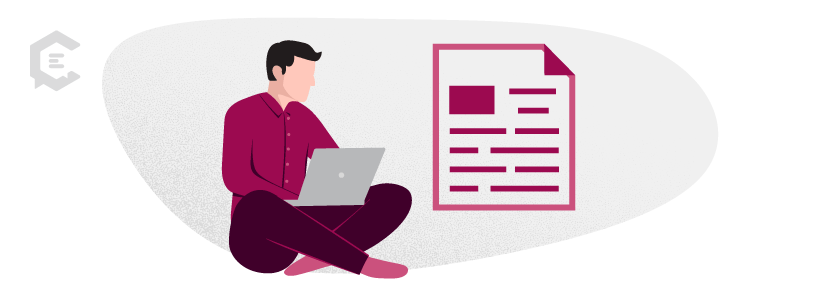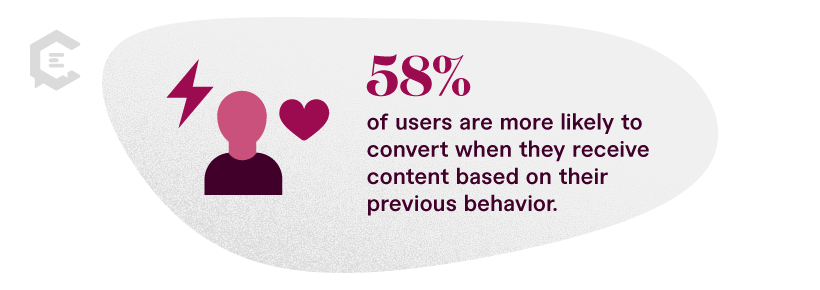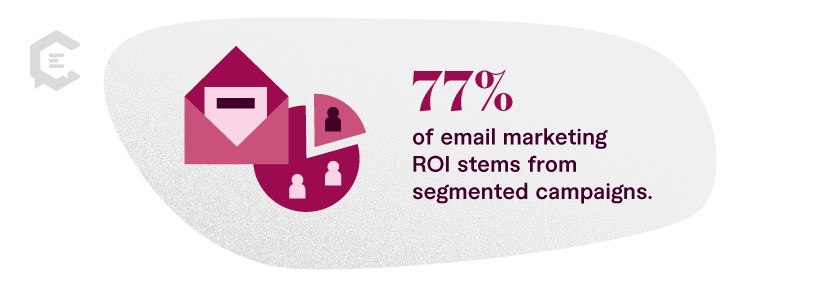What is Content Personalization?
Content personalization is developing and delivering targeted content to specific groups within your wider audience, typically using demographic, behavioral, and socioeconomic data.
In content marketing, a strong content personalization strategy goes beyond just using a customer’s first name or making a simple recommendation. It’s about using an individual’s preferences, behaviors, and interests to craft tailored content that resonates and engages with them. That deeper level of engagement should ultimately lead to increased brand loyalty, trust, and conversions.

Why Content Personalization is Important
Now more than ever, customers want to feel like they have a relationship with the brands they invest in. And relationships are a two-way street! It’s not enough to tell them about you. You want to make your content feel like it’s about them. Anyone who’s been on the receiving end of a “Dear Sir/Madam” email understands how off-putting impersonal content feels.
According to HubSpot, 58 percent of users are more likely to convert when they receive content based on their previous behavior. Customers are more likely to engage and make purchasing decisions when they feel heard, understood, and valued.
Some of the key benefits of using personalized content in your marketing strategy include:
- Enhanced engagement: Personalized content captivates audiences, resulting in higher readership, social sharing, and better retention
- Improved customer relationships: Personalization fosters deeper customer connections by creating a positive brand experience and cultivating long-lasting relationships
- Increased sales: Businesses can drive targeted website traffic, generate qualified leads, and boost sales through effective lead nurturing and conversion strategies
Simply put, if you’re not personalizing your content, you’re leaving money on the table.
How to Personalize Your Content
An easy place to begin is with segmentation. Rather than focusing on a single individual, segmenting your audience allows you to focus on small groups of individuals. Marketers who focus on segmenting often find success. Studies report that 77 percent of email marketing ROI stems from segmented campaigns.
You may choose to personalize your content to each buyer persona. Yes, these are all members of your target audience, but they likely have different demographics, live in different areas, have different interests, and spend time in different places online. Naturally, the content you create for them will look, feel, and read differently.
Another way is by segmenting your audience according to the current stage of the buyer’s journey. Leads that are close to converting shouldn’t be treated by your sales team the same way as leads that have just entered the pipeline, and the content you create for each stage of the buyer’s journey should differ as well.
And this is important: your decisions about content personalization should always be data-driven.
For example, you run an email marketing campaign for new leads, and the email contains a link to a product description page. By studying your site analytics, you can see how many go to that page and how long they stay. If the page has a high bounce rate, it’s safe to assume customers aren’t seeing what they want when they arrive.
On the other hand, for some products or services, your page analytics may reveal that you’re providing too much info. Your analytics may reveal that leads aren’t clicking on anything beneath that first fold — even though there are relevant products farther down.
The best way to know which avenue to take is to use data to guide your personalization and relevance decisions.
Content Personalization and Account-Based Marketing
Account-based marketing (ABM) strategy is where the sales and marketing teams work together to define, identify, engage, and sell to a highly targeted set of client accounts. The sales team gives input on who they want to sell to, and the marketing team creates personalized assets that speak directly to this audience.
ABM is a high-octane version of content personalization. Everything you create — from ads to nurture emails to website content — speaks directly to your target audience. You want to customize your message to address their specific interests and pain points and demonstrate that you understand them.
One of ABM’s main benefits is leveraging content personalization across departments. Instead of using a sales funnel designed to target a wide range of hundreds, even thousands of companies, ABM starts with a small, targeted list that ensures your content and outreach are highly relevant, personalized, and informed.
Outsourcing Content Personalization
While essential, personalization at scale is quite the challenge. A content marketing agency like ClearVoice can help you achieve personalization at scale by providing expertise, tools, and resources. If you’re looking for great content or need help scaling your personalization, we can help.
Unlock your team’s potential and budget when it comes to content personalization! Talk to a ClearVoice content strategist today.







